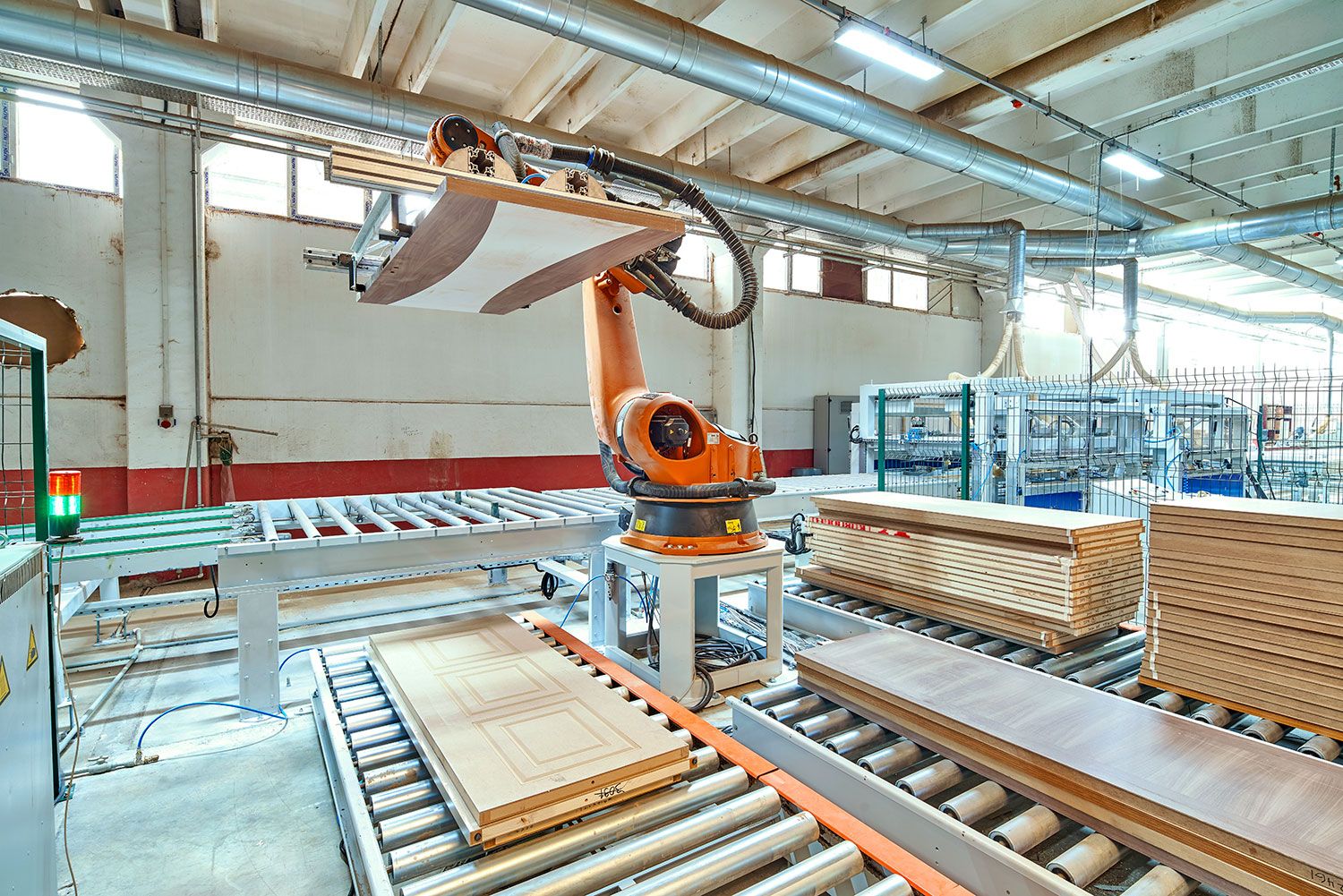Endmaksan Engineering produces door production line designs and manufactures special to every customer.

For door-cover production lines, the equipments below are designed and produced according to your capacity.
- Vacuumed door and cover charging-discharging manipulators,
- Production cooling system after press
- Spar preparation stations,
- Door sizing machines,
- Corner taping charging-discharging systems,
- Perforation charging-discharging systems,
- 6 axis robot charging-discharging systems,
- Stacking and packaging systems,
- Door press sales and installation services.
Door production lines play a very important role in various industries such as construction and manufacturing by efficiently producing high-quality doors. These production lines consist of a series of interconnected processes and components that work together to turn raw materials into finished doors. Understanding the key stages in the door manufacturing process and the benefits and challenges associated with these production lines is crucial for anyone involved in the industry.
Door production lines are complex systems that involve the integration of various components and processes to produce doors efficiently. These lines consist of machinery, equipment, and skilled workers who work together to produce doors of different sizes, styles, and materials. Components involved in door production lines include raw materials, cutting and forming machines, assembly stations and quality control measures. Door production lines are of great importance in sectors such as construction and manufacturing. In the construction industry, doors are indispensable components of buildings, and the efficient production of doors ensures the timely completion of projects. In the manufacturing industry, doors are produced on a large scale to meet the demands of the market. Without door production lines, it will be difficult to efficiently meet the requirements of these industries.
The door manufacturing process consists of several basic stages that are necessary for the successful manufacture of doors. The first stage involves the selection and preparation of materials. This stage involves careful selection of raw materials such as wood, metal or composite materials. The selected materials are then prepared by cutting them into the appropriate sizes and shapes, ensuring that they are ready for the next stage. The next stage in the door manufacturing process is the cutting and shaping of the door components. This stage involves the use of special machines to cut the prepared materials into precise shapes and sizes. Components are shaped to design specifications, ensuring uniformity and precision in the final product. The final stage in the door manufacturing process is the assembly stage. At this stage, the cut and shaped parts are brought together to form the final door. This stage requires skilled workers who meticulously assemble components to ensure proper alignment and functionality. Quality control measures are applied at this stage to ensure that the finished doors meet the required standards.
Using production lines for the manufacture of doors offers several advantages. First, it increases efficiency by streamlining the manufacturing process and reducing the time required for door production. The integration of different stages and components ensures a smooth material flow and reduces the possibility of bottlenecks or delays. Second, production lines ensure standardized quality by implementing consistent production processes and quality control measures. This ensures that each door produced meets the necessary standards and specifications. Finally, production lines shorten production time, enabling manufacturers to meet the demands of the market more effectively. But there are also challenges with door production lines. One of the main challenges is the initial installation costs. The machinery, equipment, and infrastructure required to set up a production line can be expensive. In addition, the maintenance and maintenance of the production line requires significant investments. Another challenge is the need for skilled workers who can operate the machine and keep the production line running smoothly. Finding and training qualified employees can be a time-consuming and costly process.
stainless silo manufacturing, stainless silo, storage silo, product storage silo, stainless tank, silo manufacturing, stainless storage tank manufacturing, stainless chemical storage tank manufacturing, stainless reactor, stainless reactor manufacturing, serpentine reactor, stainless chemical reactor manufacturing, tubular heat exchanger manufacturing, stainless heat exchanger manufacturing, stainless equipment manufacturing, stainless industrial equipment manufacturing, stainless welded equipment manufacturing, stainless process equipment manufacturing, stainless mixer manufacturing, aluminum silo, bolted silo manufacturing, aluminum silo manufacturing,



